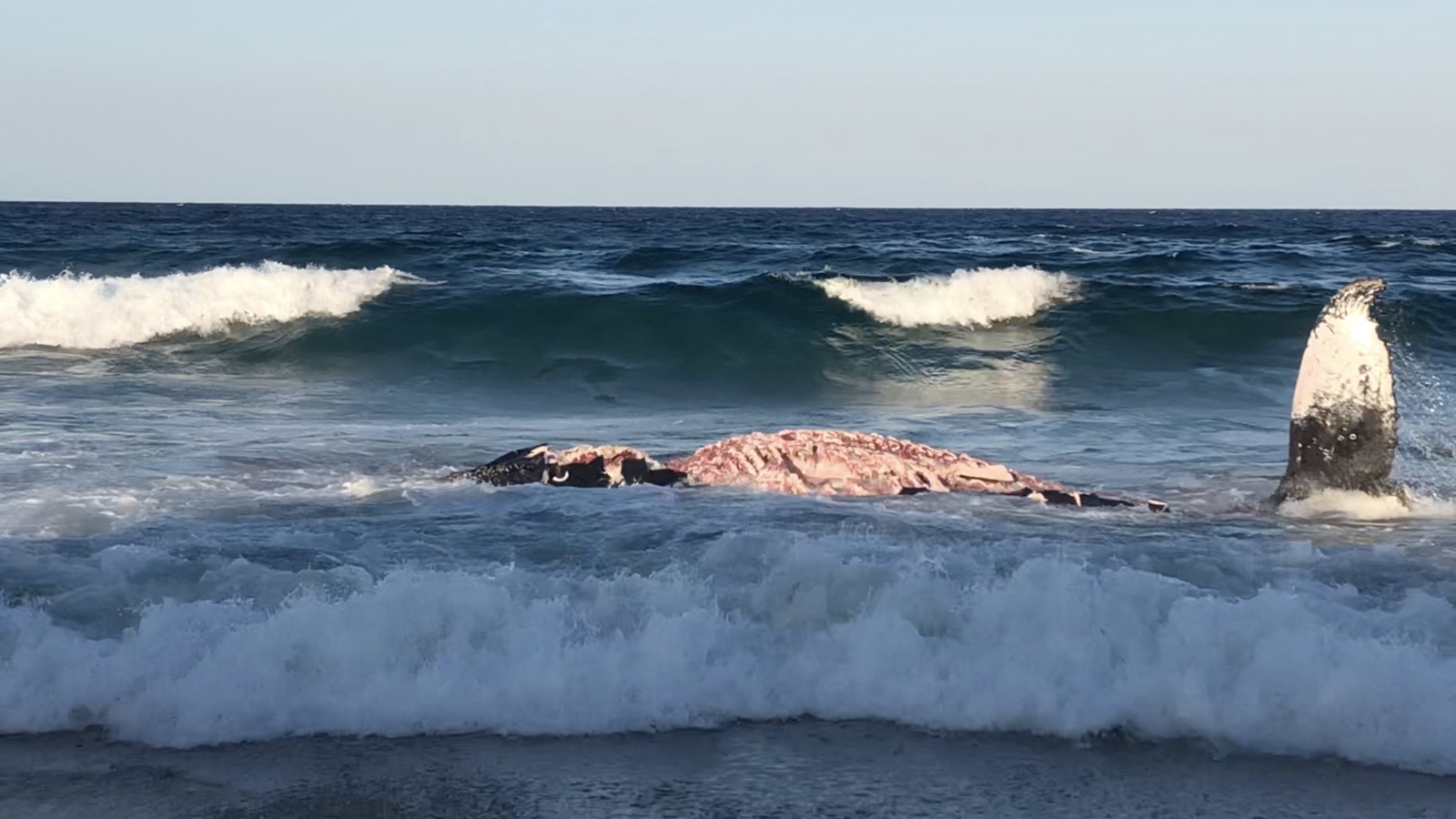This Beached Shark Tore a Beached Whale to Shreds (And It's All on Video)
That's what some Ponta, Mozambique residents did when they saw a massive, 13-foot-long (4 meters) tiger shark (Galeocerdo cuvier) seemingly beach itself in order to chow down on the 30-ton humpback whale carcass bedecking the local shore.
According to Lorrayne Gaymer, a Mozambique dive instructor who filmed the incident (and the community's shocked response), the 66,000-lb. (30,000 kilograms) whale washed up on Ponta beach in early September. [13 Bizarre Things That Washed Up On Beaches]
"Initially, a rescue attempt was made for the whale, but after the locals of Ponta contacted a whale expert it became clear that the whale was very sick and shouldn't be moved," Gaymer told The Daily Mail. "It had passed away, and as the tide went out, hundreds of locals of Ponta all came down to take their share."

Then, Gaymer said, the sharks descended. According to Caters New Agency, an estimated 60 sharks of different species — including tiger, bull and dusky sharks — took turns ripping hunks of meat and blubber out of the whale's side. By the time Gaymer arrived on the scene and started filming, one giant tiger shark had swum so close to shore that it temporarily beached itself on the sand near the whale.
As you can intuit from the sundry shrieks and bleeped-out expletives that begin Gaymer's video, the sight of a tiger shark so close to shore was both exciting and terrifying for many spectators.
Tiger sharks (named for the large stripe running down the underside of their bodies) reside in coastal waters near the tropics and subtropics around the world. They are apex predators that can reach up to 18 feet (5.5 m) long, and are known for eating most anything they encounter. According to the book "Shark!: Killer Tales From The Dangerous Depths" (Allen & Unwin, 2011), they even have a reputation for venturing close enough to land to snag terrestrial animals like dogs, polar bears and, per a possibly apocryphal story out of Australia, even porcupines.
According to National Geographic, most sharks become beached when they swim too close to shore and get caught up in the ebb and flow of the tides. This is almost certainly the fate that befell the hungry shark in Gaymer's video. Luckily, after a few minutes on the sand of Ponta beach, a large wave washed the ravenous shark back into the water (and turned the ravaged whale carcass skyward for all to see.)
Sign up for the Live Science daily newsletter now
Get the world’s most fascinating discoveries delivered straight to your inbox.
Originally published on Live Science.

Brandon is the space/physics editor at Live Science. His writing has appeared in The Washington Post, Reader's Digest, CBS.com, the Richard Dawkins Foundation website and other outlets. He holds a bachelor's degree in creative writing from the University of Arizona, with minors in journalism and media arts. He enjoys writing most about space, geoscience and the mysteries of the universe.










